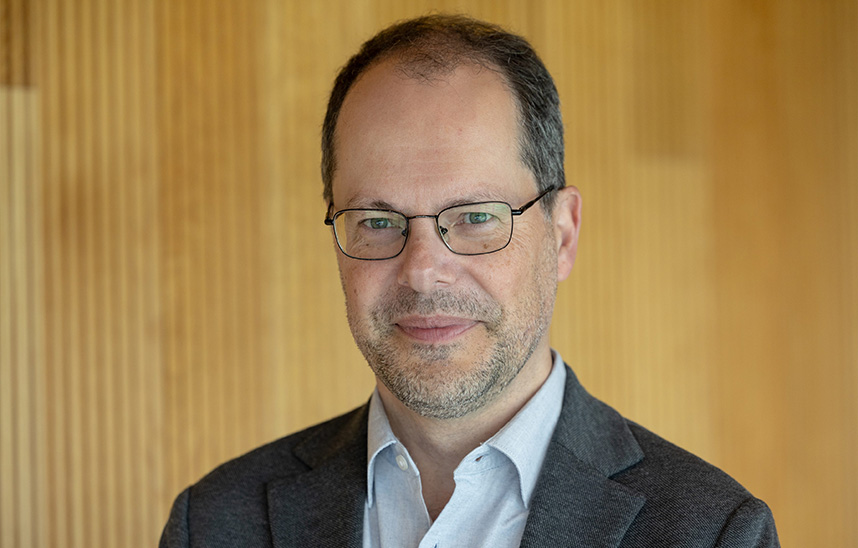Gabriel Pérez-Barreiro, new artistic director of the MUN and professor of the Master in Curatorial Studies: "Teaching in exhibition halls allows us to see curatorship in action".

FotoManuelCastells/Gabriel Pérez - Barreiro, new artistic director of the MUN.
Gabriel Pérez-Barreiro Barro (A Coruña, 1970) has been appointed artistic director of Museo Universidad de Navarra (MUN), a center with which he has been collaborating for six years as associate professor of the Master's Degree in Curatorial Studies. With extensive experience in university museums and other centers in Europe, the United States and Latin America, he is now responsible for the artistic strategy of the MUN together with Teresa Lasheras.
In this interview, he gives us the key ideas that he considers key to the training and profession of the exhibition curator:
What is the role of the commissioner?
My definition is that the curator is a great mediator. His job is one of communication: of understanding an artistic phenomenon and communicating that phenomenon to different audiences. He or she is someone whose work depends on both the public and the artistic content, so it takes an understanding of both sides to do the best possible job of mediator.
And what is the current importance of mediation?
In a very clear way, conflict and polarization are very present in our reality. The idea of mediation has to do with the ability to empathize, to wait a moment before forming a judgment, to be comfortable with uncertainty. Art is an ideal place for all of this.
Why is the professionalization of the commissioner important?
It is a profession that 30 or 40 years ago did not exist under this name, but was diluted in different titles within the institutions. The art system has grown a lot (there are many more institutions, the market is much broader...). Training creates more tools and gives people knowledge to be better prepared to navigate an almost infinite possibility of definitions and applications of this knowledge.
What characteristics should a good commissioner have?
Empathy is very important, both with the artistic phenomenon and with the social function of art. Knowing how to use one's knowledge in a productive, generative way is also the great challenge: in a world where people are increasingly enclosed in their own bubbles, this possibility of communication is fundamental.
What are the challenges facing the 21st century curator?
The great amount of information that exists and the great speed at which events happen, and the ability to take a critical distance from them: not to be completely reactive, but to be able to reflect, to see connections between things, to see their usefulness, to structure a thought.
What are the possibilities of a master's degree in a museum?
It is something fundamental because there is a risk in curatorial training courses: that they are too abstract, too academic. And I think that the possibility of applying that knowledge in a direct way, of observing what really happens in an exhibition hall, with the audiences that arrive, is a plus.
Learning by doing is essential. If you are a curator, it is because you want to do things: we are interested in working with artists, setting up spaces, solving real-life problems, so there is no other alternative for a training program than to start doing things and reflecting on them.
How has your experience been with the students of the Master in Curatorial Studies?
It is very stimulating. The level of the students and professors is very high and the fact of being able to use the Museum and give classes even in exhibition rooms allows us to see the curatorship applied, the possibility of thinking about it, of proposing other alternatives, it is something very dynamic and stimulating.